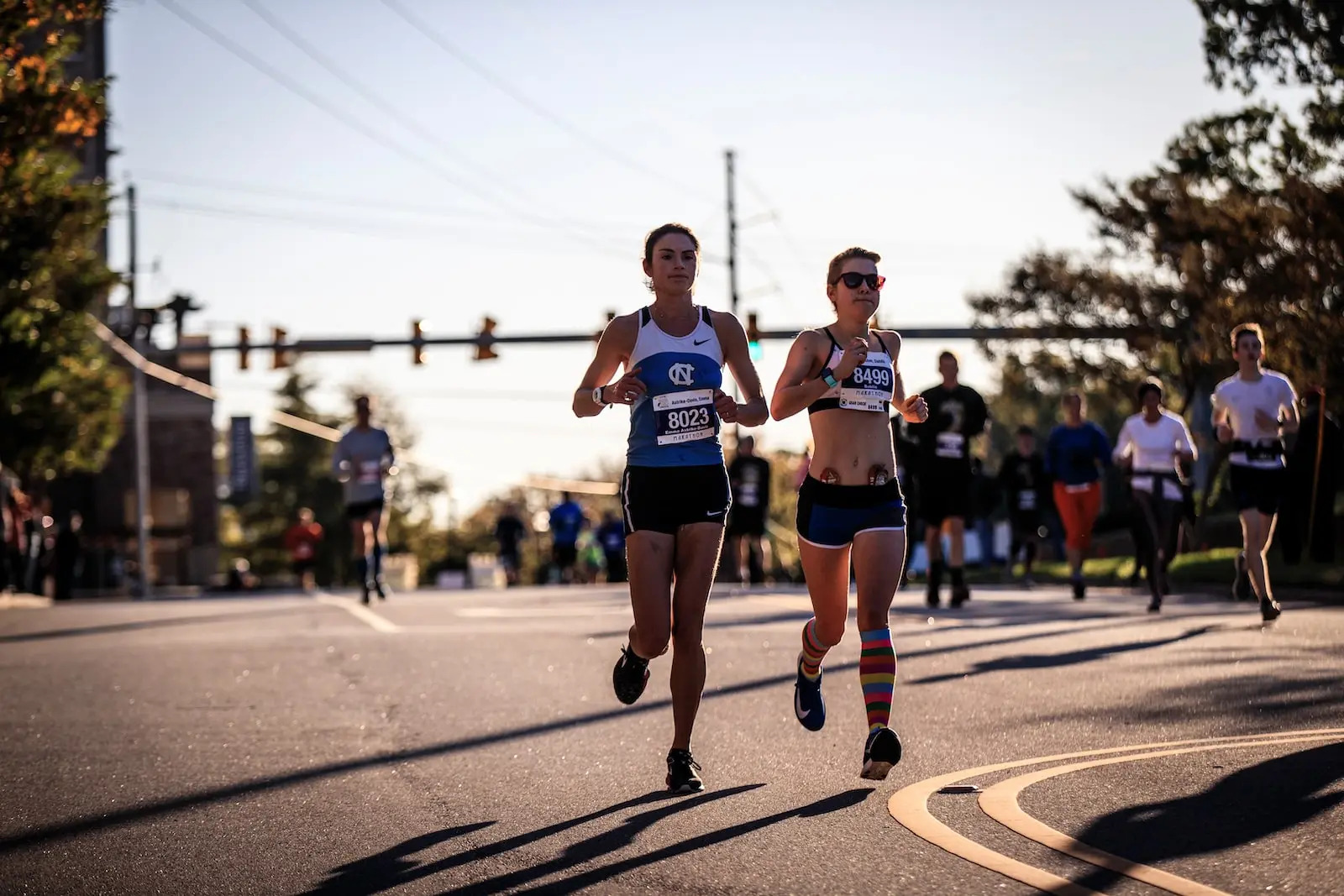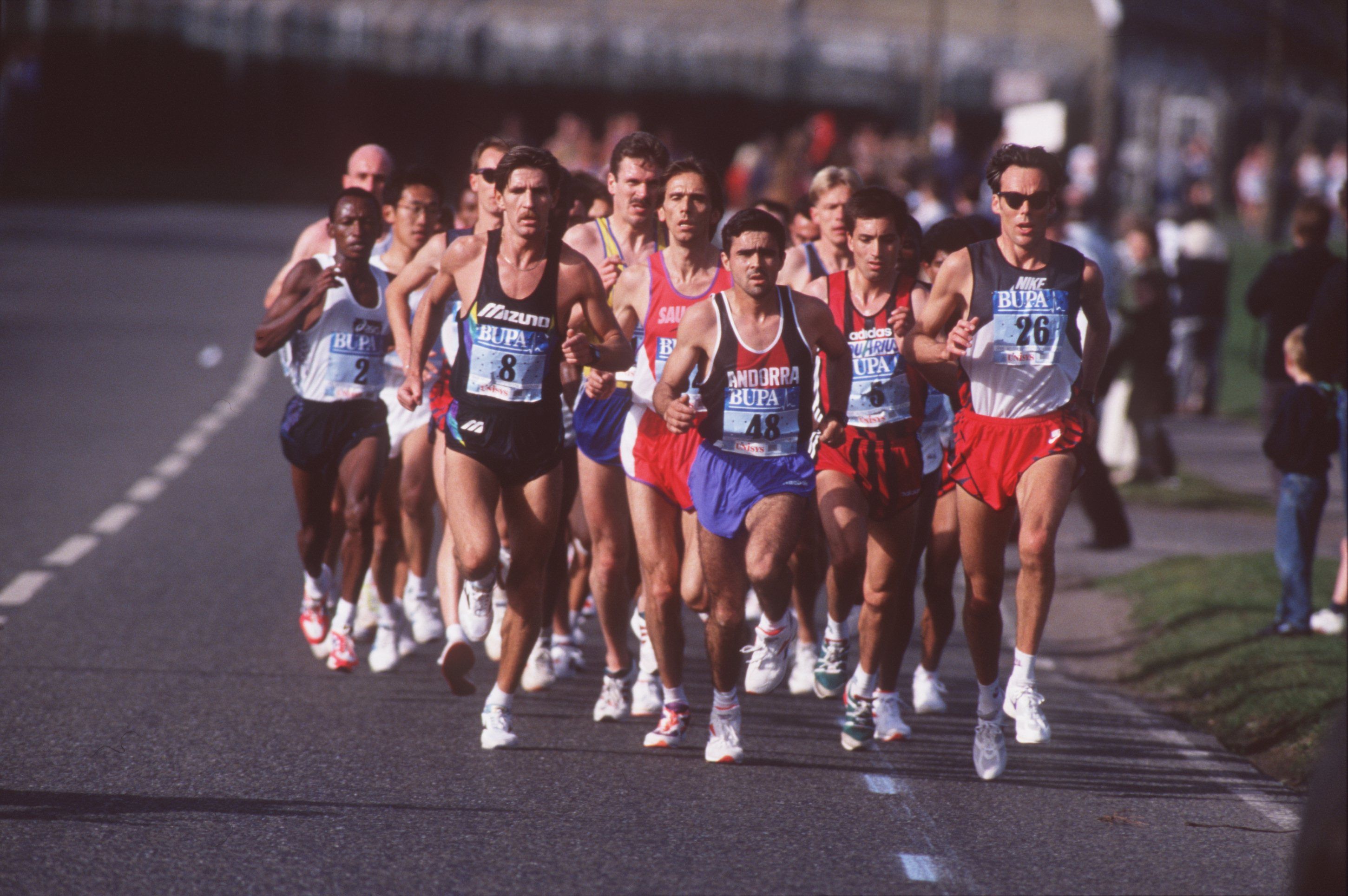Home>Misc>Featured>When Should Your Longest Run Be Before A Marathon


Featured
When Should Your Longest Run Be Before A Marathon
Published: August 12, 2023
Discover when the optimal time for your longest run before a marathon is. Get expert advice and tips from featured runners to prepare for the race.
Introduction
Preparing for a marathon is no easy feat. It requires months of training, discipline, and dedication to achieve the goal of crossing that finish line. One important aspect of marathon training is the longest run, which is the pinnacle of your training program and a key indicator of your preparedness for the race ahead. Knowing when to schedule your longest run is crucial for optimal performance on race day. In this article, we will explore the various factors to consider when determining the timing of your longest run before a marathon.
The longest run serves multiple purposes in marathon training. It allows you to build endurance, test your race day fueling and hydration strategies, practice pacing, and mentally prepare for the challenge ahead. It is the ultimate test of your physical and mental strength, and getting it right can significantly impact your race day performance.
When deciding when to schedule your longest run, there are a few key factors to take into account. Everyone’s training schedule and fitness levels are unique, so it’s important to listen to your body and consult with a coach or experienced runner if needed.
Factors to consider include your overall training program, previous race experience, recovery ability, and risk of injury. It’s essential to strike a balance between pushing your limits and avoiding overtraining, as running too close to your race may increase the risk of injury or leave you fatigued on race day.
Now that we understand the importance of the longest run and the factors to consider, let’s explore the options for when to schedule it in your marathon training program. Remember, the timeline that works best for one person may not necessarily be the best for another. It’s important to adapt and personalize your training plan to fit your individual needs and goals.
Importance of the Longest Run in Marathon Training
The longest run in marathon training holds significant importance in preparing your body and mind for the challenges of the race. It serves as a crucial milestone in your training program, allowing you to assess your endurance capabilities, refine your race day strategies, and build mental resilience.
One of the primary benefits of the longest run is building endurance. As the race distance is 26.2 miles, it is important to condition your body to handle the physical demands of running for an extended period of time. The longest run provides an opportunity to push your limits, gradually increasing your mileage to replicate race conditions. By gradually increasing the distance of your long runs, you are training your body to adapt and become more efficient at utilizing energy, which is vital for race day success.
In addition to building endurance, the longest run is an excellent opportunity to test your race day fueling and hydration strategies. During the marathon, it’s crucial to have a plan in place to replenish your energy stores and stay properly hydrated. The longest run allows you to experiment with different fueling options, such as gels or sports drinks, and practice your hydration strategy. By simulating race day conditions during your longest run, you can identify any potential issues and make adjustments to ensure you are properly nourished and hydrated during the marathon.
Moreover, the longest run serves as a valuable practice session for pacing. Running a marathon is as much a mental game as it is a physical one. It’s important to find your rhythm and maintain a steady pace throughout the race to avoid burning out or hitting the dreaded wall. The longest run offers an opportunity to practice pacing strategies, such as negative splits or even pacing, allowing you to find a pace that is sustainable for the duration of the race. This practice will help you better understand your body’s capabilities and enable you to establish a realistic goal pace for the marathon.
Lastly, the longest run plays a vital role in building mental resilience. Marathon training can be grueling, both physically and mentally. As the race day approaches, doubts and insecurities may start to creep in. However, completing a successful longest run can significantly boost your confidence and instill a sense of belief in your abilities. It gives you the mental strength to overcome challenges and push through moments of fatigue or discomfort during the marathon. The psychological benefits of the longest run cannot be underestimated, as they contribute to a positive mindset and a strong belief in your capacity to finish the marathon strong.
To sum up, the longest run in marathon training is a critical component of preparing your body and mind for the challenges of the race. It helps build endurance, fine-tune fueling and hydration strategies, practice pacing, and cultivate mental resilience. By incorporating the longest run into your training program, you are setting yourself up for success on race day.
Factors to Consider when Determining the Timing of the Longest Run
When deciding the timing of your longest run before a marathon, it is crucial to consider various factors to ensure that you optimize your training and minimize the risk of injury or burnout. Each runner is unique, so it’s important to customize your approach based on your individual needs and circumstances. Here are some key factors to consider when determining the timing of your longest run:
Overall Training Program: Your longest run should align with the overall structure and progression of your training program. It should serve as a culmination of your training, allowing you to gauge your fitness level and assess whether you’re on track to achieve your goals. If your training program follows a specific periodization model, such as increasing mileage or intensity in phases, make sure your longest run falls within the appropriate phase to maximize its benefits.
Previous Race Experience: Your experience with previous marathons or long-distance races can influence the timing of your longest run. If you have a solid foundation of marathon training and have completed multiple races, you may be able to schedule your longest run closer to the marathon without compromising recovery and performance. However, if you are a beginner or have limited race experience, it is advisable to allow more time for recovery and adaptation between your longest run and the marathon.
Recovery Ability: How quickly your body recovers from intense training sessions is a crucial factor to consider. If you tend to require more time to recover after long runs, it’s advisable to schedule your longest run further out from the marathon to allow ample recovery time. On the other hand, if you have a faster recovery rate, you may be able to schedule your longest run closer to the race while still allowing enough time for recovery and tapering.
Risk of Injury: The risk of injury can vary for each runner depending on factors such as training load, previous injuries, and biomechanics. It’s important to assess your injury history and any current niggles or issues that may arise during training. If you are prone to injuries or currently dealing with any, it may be wise to schedule your longest run further out from the marathon to minimize the risk of aggravating existing injuries or developing new ones.
Personal Goals and Priorities: Your personal goals and priorities should play a significant role in determining the timing of your longest run. If you have a specific time goal or performance target for the marathon, you may want to schedule your longest run closer to the race to ensure your peak fitness coincides with race day. However, if your primary focus is on simply completing the marathon or if the process and enjoyment of training are more important to you than the race outcome, you have more flexibility in determining the timing of your longest run.
By considering these factors, you can make an informed decision when determining the timing of your longest run before a marathon. It’s essential to strike a balance between allowing enough time for recovery, adaptation, and tapering, while also ensuring that you are adequately prepared for the physical and mental challenges of the race.
Option 1: Longest Run 2-3 Weeks before the Marathon
One common option for scheduling the longest run before a marathon is to do it 2-3 weeks before the race. This timing allows for a balance between building endurance, allowing for recovery, and providing enough time for tapering. Let’s explore the benefits and considerations of this approach:
Benefits:
- Peak Fitness Assessment: By doing your longest run 2-3 weeks before the marathon, you can assess your peak fitness level. This allows you to gauge your overall readiness for the race and make any necessary adjustments to your race day strategy.
- Adequate Recovery Time: Completing the longest run a few weeks before the marathon allows for sufficient time to recover. This recovery period is crucial for your body to adapt, repair any micro-tears in your muscles, and replenish energy stores.
- Tapering Period: Following the longest run, you can enter into a tapering phase, gradually reducing your mileage and intensity. This taper allows your body to fully recover, ensuring you are fresh and ready to perform at your best on race day.
Considerations:
- Risk of Injury: While scheduling the longest run closer to the marathon allows for ample recovery time, there is still a risk of injury. Be mindful of your body’s signals and take any necessary precautions to avoid overexertion or pushing yourself too hard during the longest run.
- Fatigue on Race Day: Completing the longest run 2-3 weeks before the marathon means you may still experience some residual fatigue on race day. It’s important to listen to your body and adjust your race day expectations accordingly, keeping in mind that tapering will help mitigate this fatigue.
- Mental Preparedness: The timing of the longest run is not only about physical readiness but also mental preparedness. Completing the longest run a few weeks before the marathon allows you to psychologically prepare for the challenge and build confidence in your abilities.
Option 1 of scheduling the longest run 2-3 weeks before the marathon is a popular choice for many runners. It provides an opportunity to assess peak fitness, allows for sufficient recovery time, and sets the stage for an effective tapering period. However, it’s crucial to listen to your body, monitor any potential signs of overtraining or injury, and make adjustments to your training plan as needed.
Option 2: Longest Run 3-4 Weeks before the Marathon
Another option for scheduling the longest run before a marathon is to do it 3-4 weeks before the race. This timing allows for an extended recovery period and additional time for fine-tuning your training. Let’s explore the benefits and considerations of this approach:
Benefits:
- Extended Recovery Time: By completing the longest run 3-4 weeks before the marathon, you allow for a longer recovery period. This additional time can be beneficial, especially if you tend to require more time to recover after strenuous workouts.
- Mental and Physical Confidence: The longer recovery period after the longest run can help boost your mental and physical confidence. You have more time to reflect on your accomplishments during the longest run and build belief in your ability to conquer the marathon.
- Training Adjustments: Scheduling the longest run earlier in your training plan gives you more time to assess areas for improvement and make necessary adjustments. You can modify your training program based on the lessons learned from the longest run to optimize your performance on race day.
Considerations:
- Tapering Length: Completing the longest run 3-4 weeks before the marathon may result in a longer tapering period. While tapering is essential for race preparation, an extended taper may lead to a decrease in fitness or a loss of momentum. It’s important to carefully manage your training during this period to maintain your conditioning.
- Risk of Training Plateau: Scheduling the longest run earlier in your training plan may put you at risk of plateauing in terms of fitness improvement. Without a challenging event closer to the marathon, you may experience a lull in training intensity. To avoid this, consider incorporating other high-intensity workouts or races into your training schedule after the longest run.
- Physical and Mental Readiness: It’s crucial to ensuring you maintain peak physical and mental readiness for the marathon. Completing the longest run 3-4 weeks before the race can help ensure you have enough time to recover, taper, and still feel fresh and energized on race day.
Option 2 of scheduling the longest run 3-4 weeks before the marathon provides an extended recovery period, allowing for adequate rest and avoiding the risk of pushing yourself too close to race day. It also provides additional time for training adjustments and building confidence. However, it’s important to manage your tapering period effectively and ensure you maintain your momentum and fitness level during this time.
Option 3: Longest Run 4-5 Weeks before the Marathon
Another option for scheduling your longest run before a marathon is to do it 4-5 weeks before the race. This timing allows for ample recovery time, extensive training adjustments, and mental preparation. Let’s explore the benefits and considerations of this approach:
Benefits:
- Maximum Recovery Time: By completing the longest run 4-5 weeks before the marathon, you provide your body with sufficient time to recover and adapt. This extended recovery period is valuable, especially if you are prone to fatigue or have a history of injuries.
- Training Adjustments and Fine-Tuning: Having more time between the longest run and the marathon allows you to make necessary adjustments and fine-tune your training plan. You can focus on addressing weaknesses, improving problem areas, and refining your race day strategies to optimize your performance.
- Mental Preparation: The longer gap between the longest run and the marathon gives you ample time to mentally prepare for the challenge ahead. You can use this period to build confidence, visualize success, and work on your mental game to ensure you are mentally strong and resilient on race day.
Considerations:
- Tapering Length: Scheduling the longest run 4-5 weeks before the marathon may result in a longer tapering period. While tapering is important for rest and recovery, an extended taper can lead to a temporary decrease in fitness level or a feeling of restlessness. It’s crucial to manage your taper effectively and incorporate strategic workouts or races to maintain your conditioning.
- Retention of Peak Fitness: With a longer gap between the longest run and the marathon, there is a risk of losing some of your peak fitness. To combat this, consider incorporating other challenging workouts or races to maintain your fitness level and retain the gains made during your longest run.
- Balance of Training and Recovery: It’s important to strike the right balance between training and recovery during the extended period between the longest run and the marathon. Avoid the temptation to overtrain during this time and use it as an opportunity to prioritize rest, proper nutrition, and injury prevention.
Option 3 of scheduling the longest run 4-5 weeks before the marathon provides ample time for recovery, training adjustments, and mental preparation. It allows for maximum rest and adaptation leading up to the race. However, it’s crucial to manage your tapering period effectively and maintain your fitness level by incorporating other challenging workouts or races.
Option 4: Longest Run 5-6 Weeks before the Marathon
Another option for scheduling your longest run before a marathon is to do it 5-6 weeks before the race. This timing allows for an extended recovery period, ample time for adjustments, and a gradual taper. Let’s explore the benefits and considerations of this approach:
Benefits:
- Extended Recovery Period: By completing the longest run 5-6 weeks before the marathon, you provide your body with ample time to recover and rejuvenate. This extended recovery period is especially beneficial for runners who require more time to recover from intense workouts or have a history of injuries.
- Training Adjustments: Having a longer gap between the longest run and the marathon allows for more flexibility in making training adjustments. It enables you to address weaknesses, focus on race-specific workouts, and fine-tune your pacing and fueling strategies to ensure optimal performance on race day.
- Gradual Taper: The longer timeframe between the longest run and the marathon allows for a more gradual taper. This gradual tapering approach helps to maintain fitness while gradually reducing training load, reducing the risk of detraining or feeling overly fatigued before the race.
Considerations:
- Maintaining Motivation: With an extended gap between the longest run and the marathon, it can be challenging to maintain motivation and focus. It’s important to stay engaged in your training, set smaller goals along the way, and seek support from training groups or running communities to stay motivated throughout the tapering period.
- Retaining Fitness Level: The longer tapering period may result in a slight decline in fitness levels. To mitigate this, you can incorporate periodic challenging workouts or shorter races to maintain your fitness and avoid losing the gains from your longest run.
- Managing Rest and Recovery: It’s crucial to strike the right balance between rest and recovery during the extended period between the longest run and the marathon. Prioritize proper nutrition, quality sleep, and injury prevention strategies to ensure your body is ready for the demands of the race.
Option 4 of scheduling the longest run 5-6 weeks before the marathon allows for an extended recovery period, ample time for training adjustments, and a gradual taper. Although it requires careful management of motivation and fitness retention, this approach can be beneficial for runners who require a longer recovery period or who want more time for specific race preparation.
Conclusion
The timing of your longest run before a marathon is a crucial decision that can impact your performance on race day. Each option – scheduling the longest run 2-3 weeks before, 3-4 weeks before, 4-5 weeks before, or 5-6 weeks before the marathon – offers unique benefits and considerations. It’s important to consider factors such as overall training program, previous race experience, recovery ability, risk of injury, and personal goals when determining the timing that works best for you.
Option 1 of scheduling the longest run 2-3 weeks before the marathon allows for a balance between building endurance and providing adequate recovery time before the race. Option 2, with the longest run 3-4 weeks before the marathon, offers an extended recovery period and additional time for training adjustments. Option 3, scheduling the longest run 4-5 weeks before the race, provides ample recovery time, extensive training adjustments, and mental preparation. Option 4, with the longest run 5-6 weeks before the marathon, allows for an extended recovery period, flexibility in training adjustments, and a gradual taper.
Ultimately, the best timing for your longest run depends on your individual circumstances, goals, and preferences. It’s important to listen to your body, consult with a coach or experienced runners, and make adjustments as needed. Remember, the longest run is a significant milestone in your marathon training journey. It helps build endurance, tests race day strategies, and builds mental resilience. By carefully considering the timing and preparing adequately, you can set yourself up for a successful and enjoyable marathon experience.








